Part of a series of articles titled Coastal Geology—Beach Materials.
Article
Coastal Sediments—Parent Material
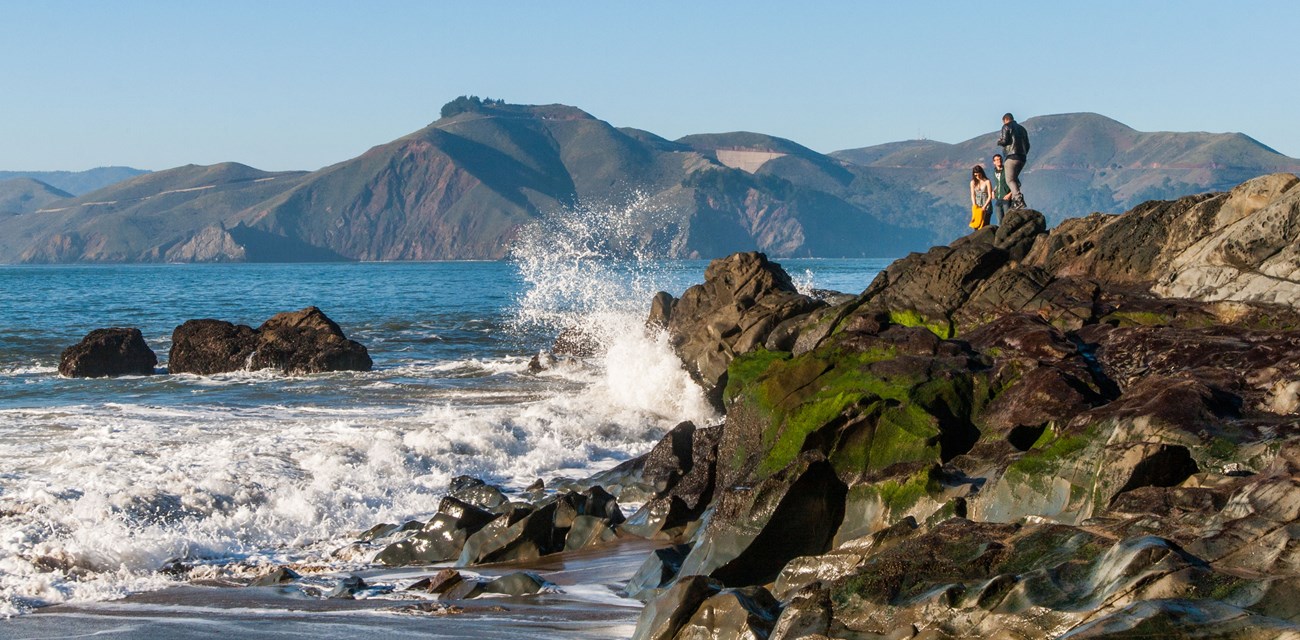
NPS Photo.
The materials that compose a beach are diversely sourced and include nearly any mineral found on land. They range in size from mud and sand to cobbles and boulders. Any material present at a beach is inherently linked to the parent material it derived from. Beach sediment is categorized by three main types depending on its origin:
- Terrigenous Parent Material (derived from land)
- Volcanic Parent Material (derived from volcanic activity)
- Biogenic Parent Material (derived from shells and skeletons of marine organisms)
The location of a beach strongly influences what parent materials the beach will be made of. This depends on climate (e.g., tropic vs. arctic), geologic setting (e.g., glaciated vs. volcanic), and tectonic activity (e.g., leading vs. trailing-edge coasts).
Terrigenous Parent Material
Terrigenous sediments are those derived from land. These include materials that were once the peaks of mountains eroded away and washed seaward as well as recently formed bluffs slumping directly onto the beach. Terrigenous grain types can be as diverse as the rock types on earth. They may end up on beaches as boulders and cobbles if locally sourced or as fine grain sand if originating from further away.
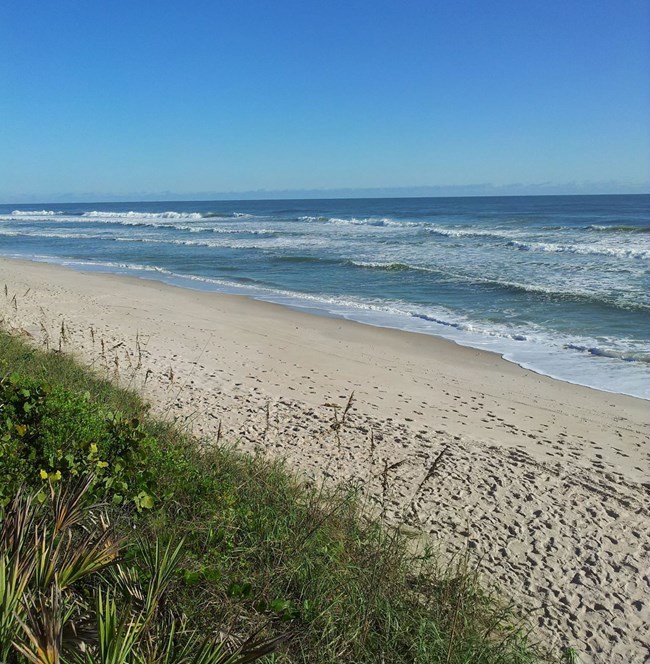
Continental trailing-edge beaches—such as those seen on the Atlantic Ocean—see very little seismic activity and have a much gentler slope from inland mountain ranges to the coast. As a result, these terrigenous sediments may travel far distances to the sea, undergoing thousands of years of mechanical abrasion and chemical weathering in the process. This causes many minerals to break down as they are transported via rivers and streams. Quartz and feldspar are common terrigenous mineral groups found in igneous, metamorphic, and sedimentary rocks. Feldspar minerals are the most abundant in the earth’s crust, however, these materials do not often make it to continental leading-edge beaches compared to quartz. Feldspars, along with other silicate minerals, are much more susceptible to abrasion and chemical weathering. This results in clay sized particles which remain suspended in water and do not easily get deposited on beaches. For reasons like this, trailing-edge coasts are much less influenced by river deposits and more dependent on sand supply from the offshore continental shelf. Trailing-edge beaches in parks include those found at Canaveral National Seashore, Florida.
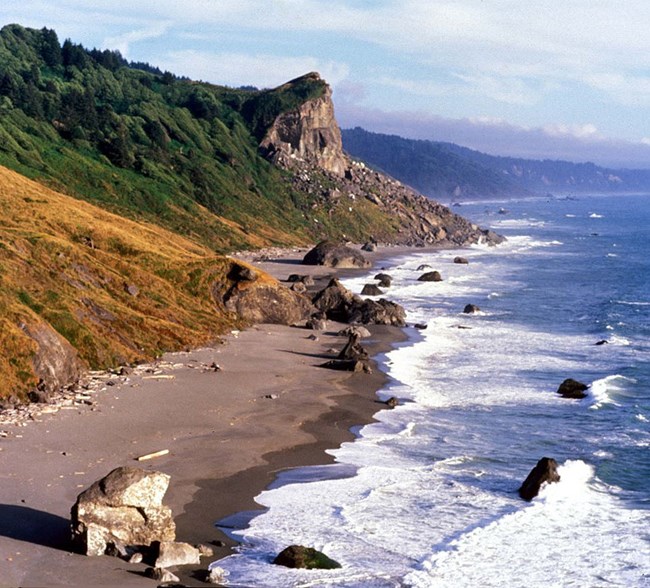
Continental leading-edge beaches—as found on the Pacific coast of North America—are in seismically active areas and tend to have relatively young sediments on a geologic timescale. The mountains here are much closer to the coast leading to quicker and less destructive transportation of beach parent material from inland sources. Rivers and streams play a more significant role in beach sediment supply. There is a wide array of grain types present along the west coast of North America including sand-sized fragments from preexisting rocks and grains from individual minerals. The narrow continental shelf brings higher energy wave action to the coast resulting in the breakdown of headwaters and coastal cliffs. As a result, many of the beaches are seen to have locally derived gravel (cobbles and boulders) composed of more resistant, often igneous or metamorphic, parent material. If a beach consists of mostly the same material, it is likely locally sourced. Golden Gate National Recreation Area provides an example of the diversity associated with leading edge margins. Coastal geomorphology in the park is diverse and varies widely. Coastal cliffs and bluffs locally source beach sediment with common rock fall, slumps, and debris slides. Alluvial deposits from the adjacent hills and submerged offshore dunes contribute to the formation of the sandy beaches.
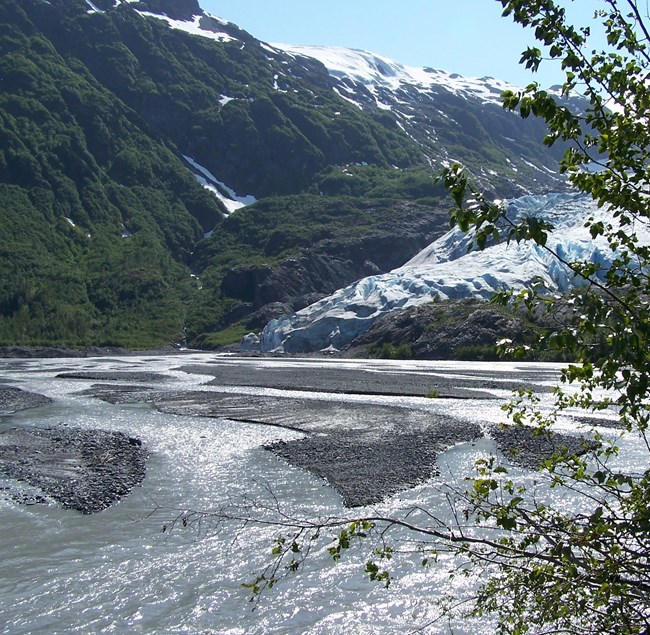
Glaciated coasts will have a larger amount of glaciated sediments derived from a variety of sources. As a glacier flows it picks up everything from clay-sized grains to large boulders. Glacial till is a heterogenous mixture of rocks sourced from anywhere the glacier may have moved. This often includes crystalized igneous and metamorphic rocks like gneisses and granites but can be any terrigenous rock within the glacier's conveyer belt. Glaciated coasts like those found in Acadia National Park or Kenai Fjords National Park, Alaska will commonly have diverse composition and a full spectrum of material sizes from clay to boulders. Once trapped in the glacial ice, transported material is protected from chemical weathering and abrasion leading to more angular edges. If the material does have rounded edges it suggests water transport or wave action.
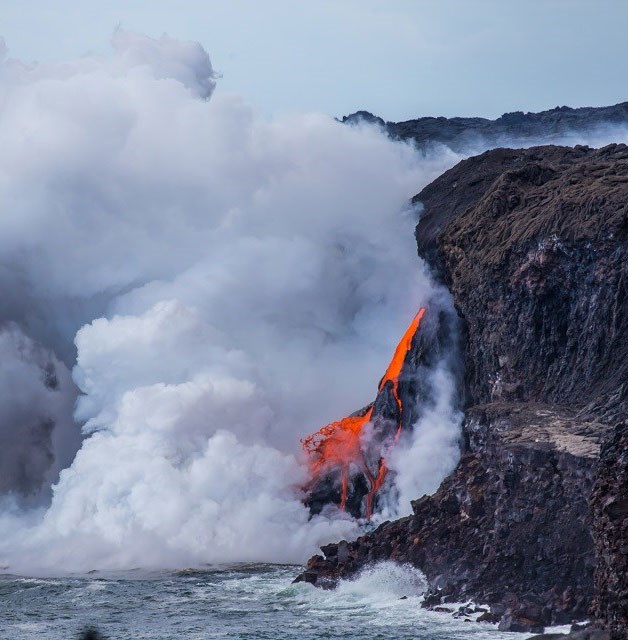
Volcanic Parent Material
Volcanic activity brings newly formed volcanic sediment to the beaches. Volcanic rock makes up many parks along the Pacific coast, Hawaii, Alaska, America Samoa, Guam and islands in the Caribbean. Magma deep under the earth’s crust can make its way to the surface, forming mountains and islands as igneous rock. Lava from Mauna Loa volcano in Hawai’i Volcanoes National Park flows directly into the (much colder) sea causing lava to fracture into small shards of black glass. The glass is then pushed ashore and onto beaches by waves. Lava flows may harden along the coast and form cliff structures before making contact with the sea. Wave action erodes the rock into grains and clasts which eventually get washed up as black sand on beaches. Much of the dark sand found on beaches originates from mafic rocks like basalts and gabbro (USGS 2017). Dark sand beach berms can be seen at the mouth of the Aniakchak River in Anaikchak National Monument and Preserve, Alaska. These volcanic sediments originated at the Aniakchak Caldera less than 25 mi (40 km) away.
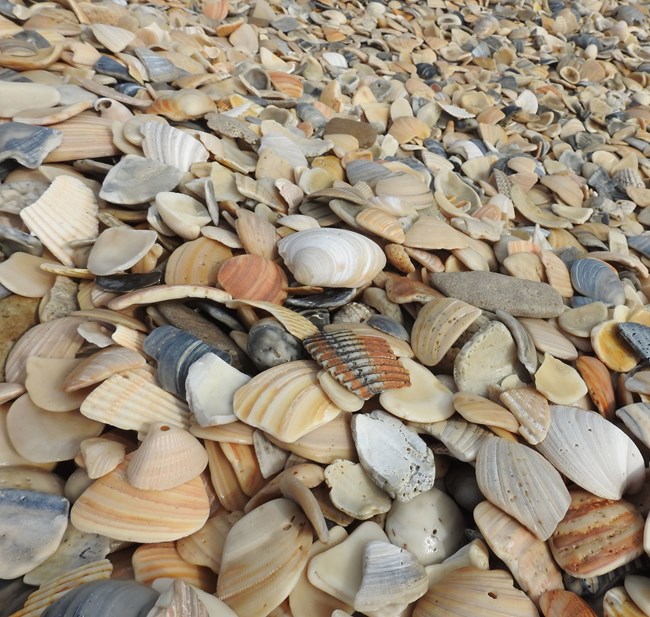
Biogenic Parent Material
Biogenic sediments are grains derived from the hard parts of organisms, such as skeletal debris, shells, and teeth. These calcium carbonate (CaCO3) structures are precipitated out of sea water in the form of sea creatures’ shells and skeletons. The two common forms of precipitated calcium carbonate minerals found in the ocean are calcite (e.g., clams) and aragonite (e.g., snails). They share the same chemical formula but differ in structure with calcite being more stable than aragonite. The precipitation of calcium carbonate, or calcareous, structures is being impacted by changes in ocean acidification. Calcareous shells and sediment on beaches are largely made up of the following: mollusks, barnacles, arthropods, brachiopods, echinoderms, foraminifera, serpulid worms, and microfauna living within beaches. Calcareous algae also contribute to the aragonite grains found on many beaches.
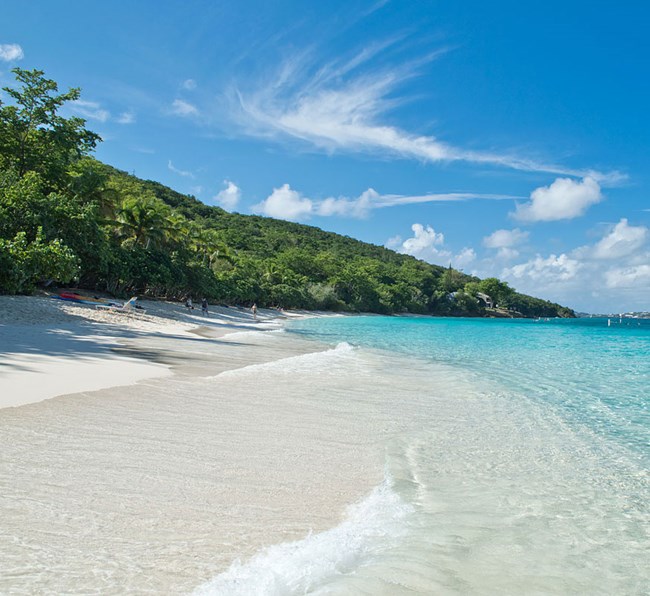
Corals and Bryozoa are the parent material for many tropical beaches behind offshore reefs, often producing beautiful white carbonate beaches like those seen in Virgin Islands National Park. The carbonate fraction—or portion of beach sediment that is calcareous—increases near the tropics where the productivity and abundance of calcareous organisms increases. However, biogenic parent material can still be found in abundance in cold water regions such as Glacier Bay National Park in southeast Alaska where foraminifera, sea urchins, muscles, and barnacles are present. These organisms may be torn away by storms and washed onto beaches where they are broken down by waves.
Related Links
- Acadia National Park, Maine [Geodiversity Atlas] [Park Home]
- Aniakchak National Monument & Preserve, Alaska [Geodiversity Atlas] [Park Home]
- Canaveral National Seashore, Florida [Geodiversity Atlas] [Park Home]
- Glacier Bay National Park, Alaska [Geodiversity Atlas] [Park Home]
- Golden Gate National Recreation Area, California [Geodiversity Atlas] [Park Home]
- Hawai'i Volcanoes National Park, Hawai'i [Geodiversity Atlas] [Park Home]
- Kenai Fjords National Park, Alaska [Geodiversity Atlas] [Park Home]
- Virgin Islands National Park, Virgin Islands [Geodiversity Atlas] [Park Home]
References
- Pilkey, Orrin H., et al. The world's beaches: a global guide to the science of the shoreline. Univ of California Press, 2011.
- USGS website, https://geomaps.wr.usgs.gov/parks/coast/sand/blacksand.html
Last updated: September 10, 2018
